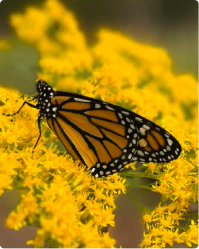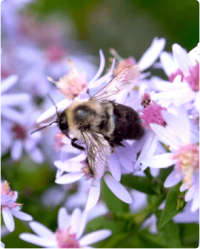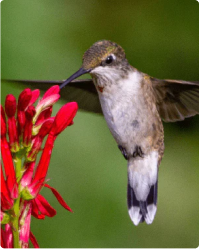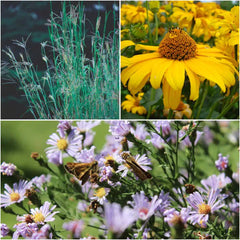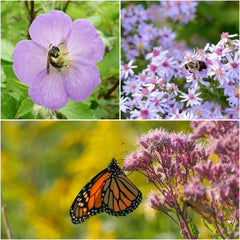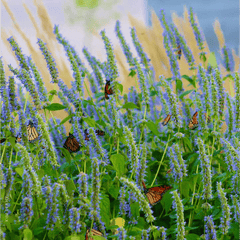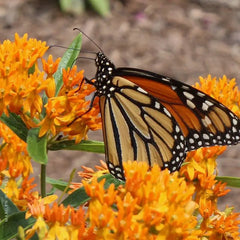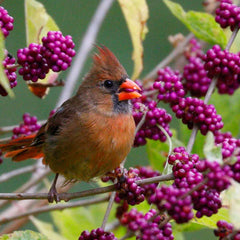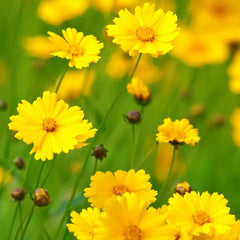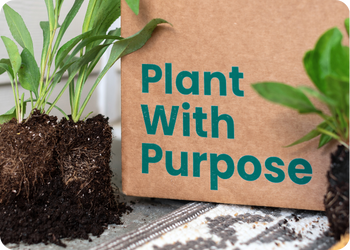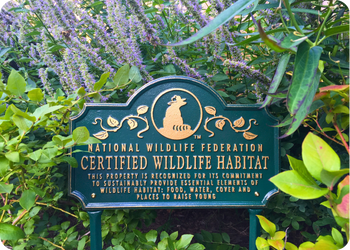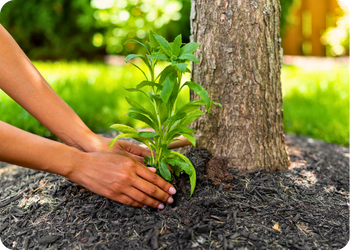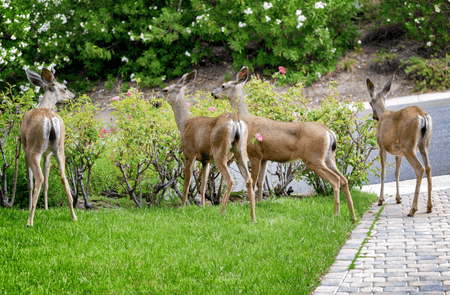What To Do If Your Native Plants Become Leggy

We’ve all seen it! A teetering long green stem, or even the dreaded “flop,” when a bloom bends back to the ground from lack of support. When garden plants become leggy, it means that they are growing excessively tall and producing elongated, weak stems with sparse foliage. This condition is characterized by a disproportionate amount of stem growth compared to the development of leaves and side stems or branches.
Any plant can become leggy, even native plants. In a garden situation where aesthetics are usually a consideration, leggy growth is generally undesirable because it can make the plants look less attractive and become more susceptible to breaking or flopping over. Additionally, leggy plants often have reduced flower production, resulting in less blooms for the wildlife (and humans) to enjoy.
Herbaceous perennial plants that go dormant in winter and then sprout again from the roots in spring often undergo a rapid surge in growth. Under certain conditions this can sometimes lead to the development of slender and fragile stems and branches, as the rapid growth becomes concentrated at the tips. Even woody shrubs that don’t die back in winter can become leggy under certain conditions.
So what causes legginess in plants? Legginess can arise from conditions that cause a growth spurt to develop above ground before the plant's stems and roots have attained sufficient dimension and strength. This outcome manifests as floppy, leggy plant growth. Leggy growth can also occur when plants are stretching towards a light source or not receiving enough light, leading to weak, elongated stems that are unable to support themselves. The plant itself may even break.
Several factors are worth considering if you’re worried about leggy plants.
Why do plants become leggy?
Insufficient Light: One of the most common reasons for leggy growth is a lack of adequate sunlight. Plants require sufficient light to produce energy through photosynthesis, and when they don't receive enough light, they may stretch out in an attempt to reach more light.
Crowding: When plants are placed too closely together, they compete for light, and the weaker ones may grow taller to reach the light source, leading to leggy growth.
Overfertilization: Excessive use of nitrogen-rich fertilizers can promote rapid, weak growth, causing the plants to become leggy. Truly native plants should thrive without added fertilizers.
Improper Pruning: Incorrect pruning practices or failure to prune at the right time can result in leggy growth. Pruning encourages bushier growth, but if done improperly, it can stimulate elongated stem growth instead.
Temperature and Humidity: Some plants may become leggy in response to environmental factors such as high temperatures or low humidity levels.
Genetics: In some cases, certain plant species or cultivars may have a natural tendency to grow leggy.Steps to combat plant legginess
If your native plants get too tall or leggy, you can take action to maintain their health and appearance. Depending on the plant, there are some steps you can take to turn this around.
1. Pruning: Regular pruning can help control the shape and size of your native plants. Use sharp, clean pruning shears to trim back the overgrown stems. Focus on cutting back the longest, leggiest branches to encourage bushier growth. Make sure you're pruning your native plants at the appropriate time of year. Pruning at the wrong time may interfere with their natural growth cycles and potentially harm the plant.
2. Pinching: Pinch back the tips of the stems to promote branching and bushier growth. This method is especially useful for plants with soft, flexible stems.
3. Stake or Support: If the legginess is due to weak stems that can't support their own weight, consider staking or providing support for the plants. This will prevent them from bending or breaking under their own weight and allow them to grow more upright.
4. Division: For perennial wildflowers and grasses, dividing the plant may be necessary to control its growth and maintain its health. Dig up the plant and carefully separate it into smaller sections, replanting each division with sufficient space between them. You can even find a local native plant community to share the fruits of your labor (or lack thereof) with.
5. Provide Adequate Light: Place your plants in a spot where they'll get the right amount of sunlight for their needs. If they are stretching towards a light source, it might indicate that they aren't getting enough light where they are currently placed.
6. Watering: Overwatering can lead to weak and leggy growth. Make sure you are watering your native plants according to their specific needs. A deep, infrequent watering schedule is often better than frequent, shallow watering. If you’ve just received your plants or just put them in the ground, be sure to water regularly as they establish roots.
7. Evaluate Plant Location: If your plants are consistently becoming leggy, it might be a sign that they aren't suited for their current location. Consider moving them to a spot where they can thrive and maintain a more compact shape.
8. Monitor for Pests and Diseases: Sometimes, leggy growth can be a sign of pest infestations or diseases affecting the plant's health. Regularly inspect your plants for any signs of trouble and take appropriate action if needed.
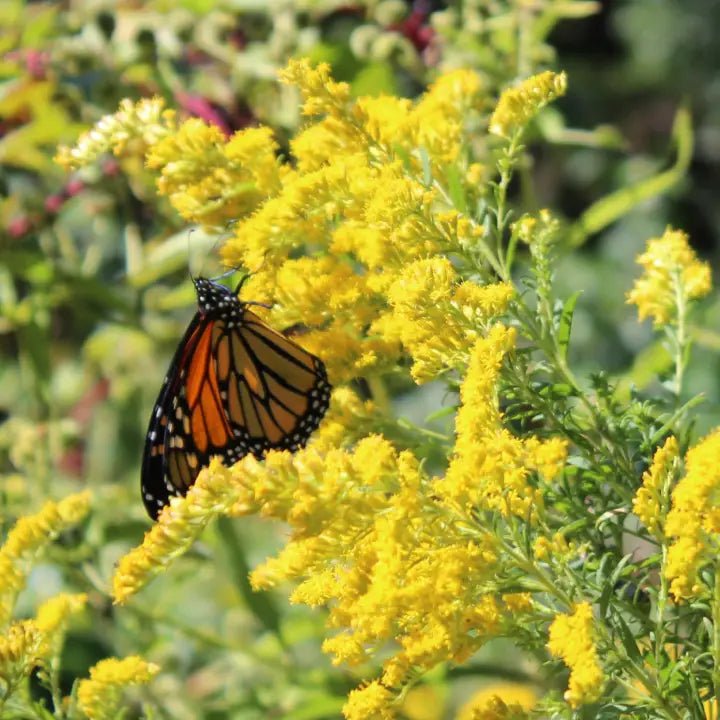
Find Native Plants by Zip Code
We took the guesswork out of planting native. Check your zip to see what ships!
